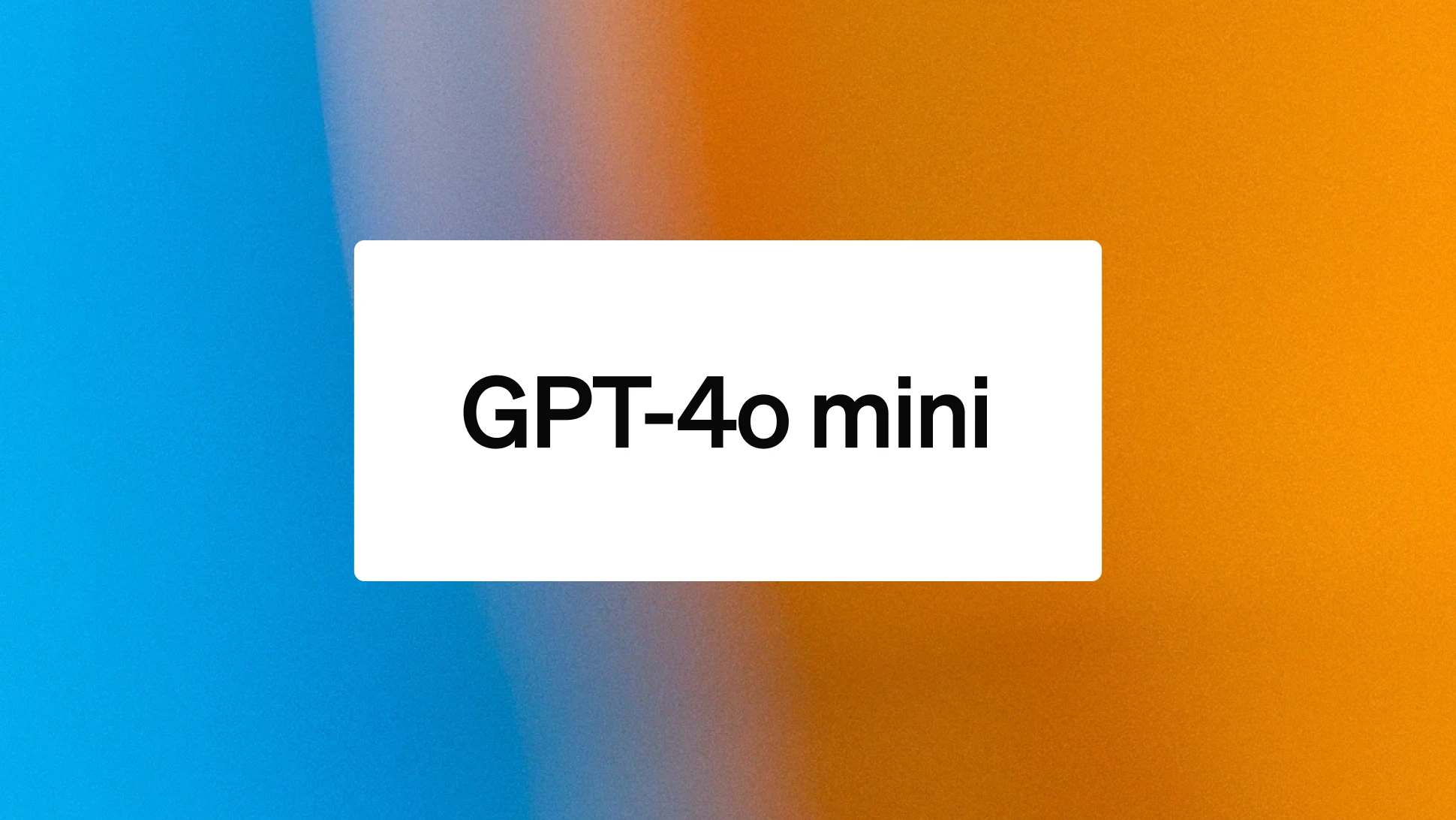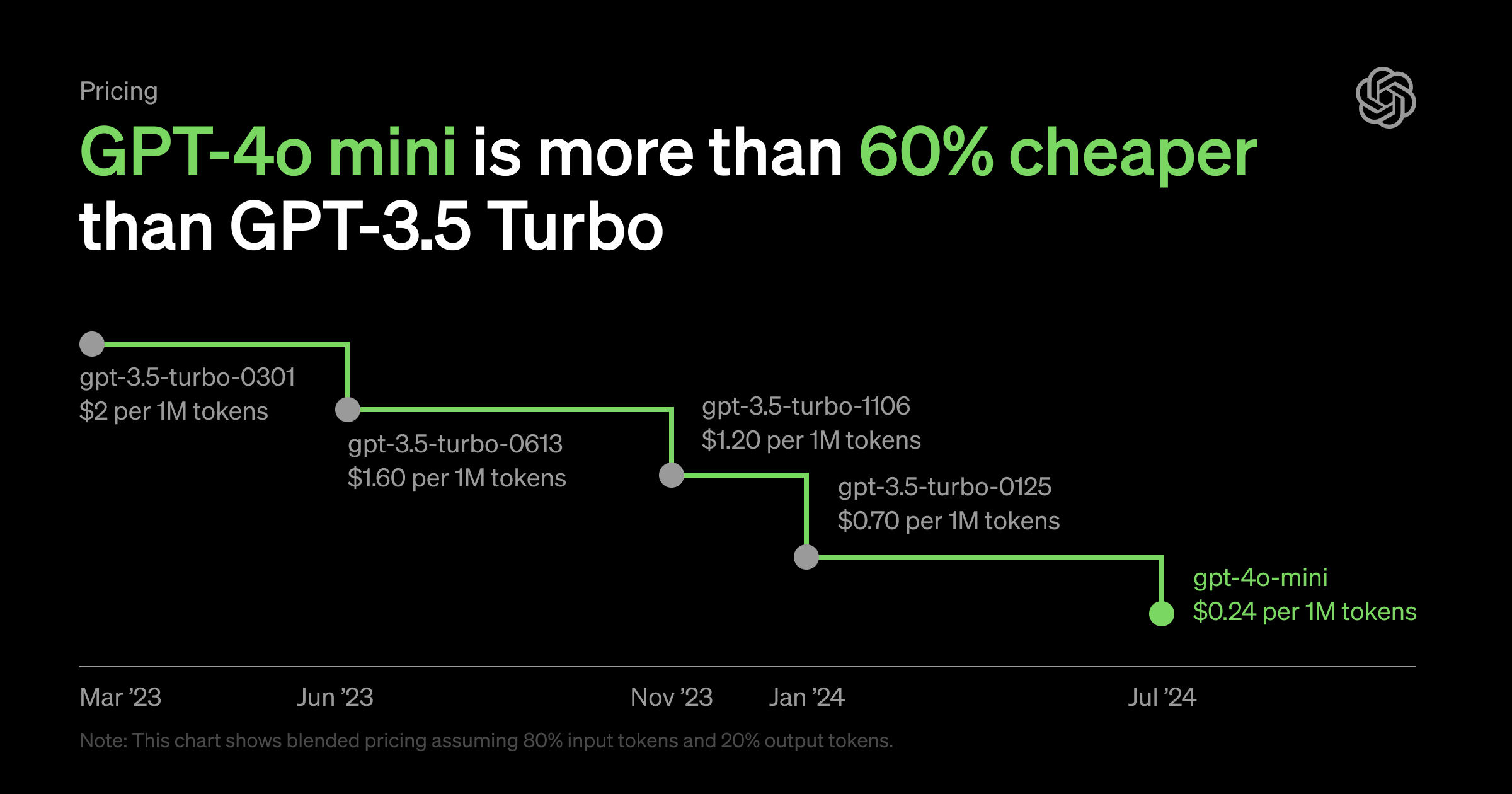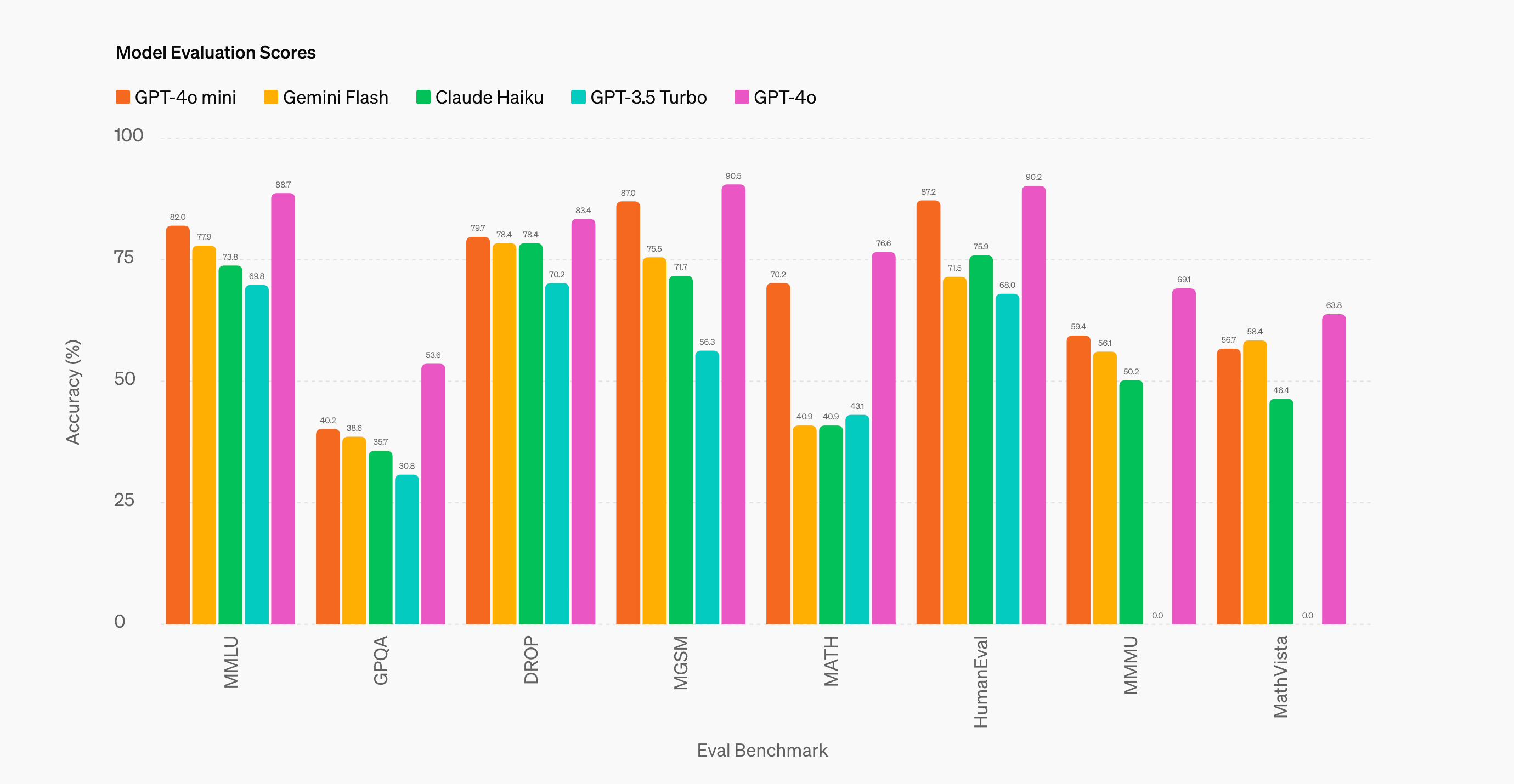OpenAI’s GPT-4o mini: AI Power Meets Affordability

In a step towards democratizing artificial intelligence, OpenAI has revealed this GPT-4o mini, a new cost-efficient small model. This latest addition to OpenAI’s line of language models is designed to strike a balance between advanced capabilities and affordability, potentially opening doors for broader adoption of AI technologies across industries.
GPT-4o mini represents a strategic shift in OpenAI’s approach to AI development. While the company is known for pushing the boundaries with increasingly powerful models like GPT-4, this new offering focuses on making advanced AI more accessible. GPT-4o mini is designed to deliver high-quality performance for a wide range of tasks, but at a fraction of the cost of its larger counterparts.
The introduction of GPT-4o mini could significantly expand the range of AI applications by lowering the barrier to entry for developers and businesses. By offering a model that is both powerful and economical, OpenAI addresses one of the key challenges in AI adoption: the high costs associated with using advanced language models. This move could potentially accelerate innovation in areas where AI integration was previously prohibitively expensive.

OpenAI
Understanding GPT-4o Mini
GPT-4o mini is a small-scale language model that is impressive in terms of capabilities. Key features include:
- Advanced Language Processing: Despite its smaller size, the GPT-4o mini demonstrates advanced language understanding and generation skills.
- Multimodal options: The model supports both text and image input, with plans to expand to audio in the future. This versatility makes it suitable for a wide range of applications.
- Improved reasoning: GPT-4o mini shows improved performance on complex reasoning tasks, outperforming many of its competitors on small models.
- Cost efficiency: Designed for high-volume applications, the GPT-4o mini provides a more economical solution for tasks that do not require the full power of larger models.
Comparison with previous models (GPT-3.5 Turbo, GPT-4)
To truly appreciate the progress that the GPT-4o mini brings, it is essential to compare it with its predecessors:
GPT-3.5 Turbo Comparison:
- Performance: GPT-4o mini scores 82% on the MMLU benchmark, a significant improvement over GPT-3.5 Turbo’s 70%.
- Cost: GPT-4o mini is over 60% cheaper than GPT-3.5 Turbo, making it a more attractive option for large-scale deployments.
- Context window: With a 128K token context window, the GPT-4o mini can process much longer inputs compared to GPT-3.5 Turbo’s 4K token limit.
GPT-4 comparison:
While GPT-4 remains superior in terms of overall capabilities, GPT-4o mini offers a lighter and more cost-effective alternative for tasks that do not require the full power of GPT-4. This positioning allows developers to choose the most suitable model for their specific use case, optimizing both performance and costs.

OpenAI
Positioning in the market for small models
GPT-4o mini enters a competitive landscape of small AI models, including offerings like Gemini Flash and Claude Haiku. However, OpenAI’s new model aims to distinguish itself through superior performance and cost-efficiency. Early benchmarks suggest that GPT-4o mini outperforms its competitors in key areas such as mathematical reasoning and coding skills, making it an attractive option for developers looking to scale powerful AI applications without incurring the costs associated with previous frontier models .
Technical specifications
Context window size
One of the standout features of GPT-4o mini is its extensive context window of 128,000 tokens. This large context window is a game changer for many applications, allowing the model to process and understand much longer input. This capability enables more nuanced interactions and opens up possibilities for tasks that require analyzing extensive documents or maintaining long-term context in conversations.
Token Prizes
GPT-4o mini introduces a very competitive pricing structure:
- 15 cents per million input tokens
- 60 cents per million output tokens
This pricing model represents a significant reduction compared to previous frontier models, making it feasible for developers to build and scale powerful AI applications more efficiently. The cost-effectiveness of GPT-4o mini could especially impact startups and smaller companies that previously found it difficult to integrate advanced AI capabilities into their products due to budget constraints.
Supported inputs and outputs
Currently GPT-4o mini supports:
- Text input and output
- Vision inputs
The inclusion of visual capabilities in a small, cost-efficient model is particularly noteworthy, as it opens up possibilities for multimodal applications previously limited to more expensive models. OpenAI has also announced plans to expand GPT-4o mini’s capabilities with audio inputs and outputs in the future, further expanding its versatility and potential use cases.
Closing date of knowledge
The GPT-4o mini knowledge base runs until October 2023. This relatively recent closure ensures that the model has access to current information, making it suitable for applications that require current knowledge. However, users should be aware of this limitation when deploying the model for tasks that may require more recent information.
By offering this combination of advanced capabilities, cost-efficiency and versatility, GPT-4o mini represents an important step toward making AI more accessible and seamlessly integrated into a wide range of applications. As developers and companies begin to explore its potential, we could see a new wave of innovation in AI-powered solutions across industries.

Performance and capabilities
GPT-4o mini shows impressive performance in several benchmarks, positioning it as a formidable player in the small model market.
Benchmark scores
MMLU (Massive Multitask Language Understanding):
- GPT-4o mini: 82%
- Gemini 1.5 Flash: 79%
- Claude 3 Haiku: 75%
MGSM (math-based multitask):
- GPT-4o mini: 87%
- Gemini 1.5 Flash: 78%
- Claude 3 Haiku: 72%
Multimodal reasoning skills
GPT-4o mini excels in multimodal tasks and shows strong performance on benchmarks such as MMMU (Multimodal Massive Multitask Understanding). The ability to process both text and visual input allows for more complex reasoning tasks that combine different types of information.
Math and coding skills
In addition to its MGSM performance, the GPT-4o mini exhibits strong capabilities in coding tasks. On the HumanEval benchmark, which measures coding performance, GPT-4o mini scored 87.2%, surpassing both Gemini Flash (71.5%) and Claude Haiku (75.9%). This makes it a powerful tool for developers looking for cost-effective help with programming tasks.
Usage scenarios and applications
Simple, high-volume tasks
GPT-4o mini is ideal for applications that require frequent, high-speed AI interactions. Examples include:
- Chatbots for customer support
- Content moderation systems
- Real-time data analysis tools
Real-time text responses
The speed and efficiency of the model make it suitable for applications that require generating or analyzing text in real time, such as:
- Help via live chat
- Instant language translation
- Real-time content summary
Potential future applications (audio, video)
With planned support for audio inputs and outputs, GPT-4o mini could enable new applications in:
- Voice-controlled AI assistants
- Real-time speech-to-text and text-to-speech systems
- Audio content analysis and generation
Availability and integration
API access for developers
Developers can access GPT-4o mini through OpenAI’s API, allowing seamless integration into existing applications or the development of new AI-powered tools.
ChatGPT integration for consumers
GPT-4o mini will be integrated into the ChatGPT web and mobile app, making its capabilities immediately accessible to consumers. This integration could significantly improve the user experience for ChatGPT users.
Rollout plans for companies
OpenAI has announced that business users will get access to GPT-4o mini starting next week. This rollout strategy ensures that companies can quickly use the model’s capabilities to improve their products and services.
Frequently asked questions: GPT-4o mini
How does GPT-4o mini compare to GPT-4 in terms of performance?
GPT-4o mini offers strong performance for its size, but GPT-4 remains superior overall. The mini version is designed for cost-efficiency and speed on less complex tasks.
What are the main applications of GPT-4o mini?
Key applications include high-volume tasks such as chatbots, content moderation, and real-time text analysis. It is ideal for scenarios that require fast, cost-effective AI responses.
Does GPT-4o mini support multimodality from launch?
Yes, GPT-4o mini will support text and image input at launch, with plans to add audio capabilities in the future.
Which companies already use GPT-4o mini?
While no specific company names were provided, early adopters are likely to include customer service, content creation and data analytics companies looking for cost-effective AI solutions.
How does GPT-4o mini improve data processing efficiency?
GPT-4o mini improves data processing efficiency through faster inference times and lower computation requirements, enabling more economical handling of high-volume tasks.






